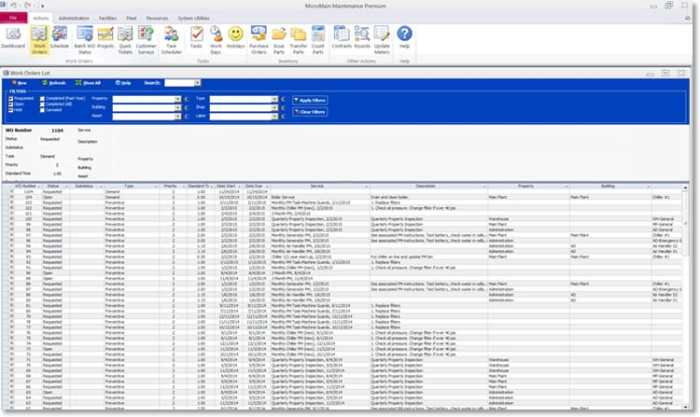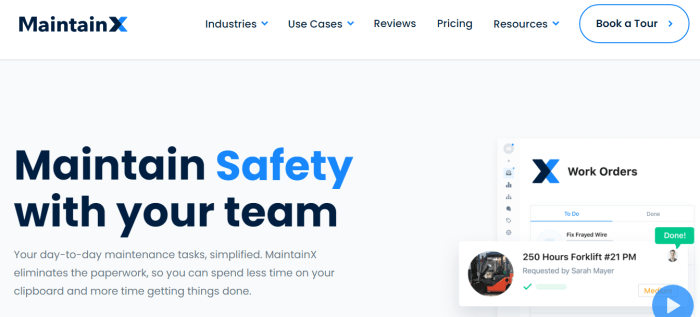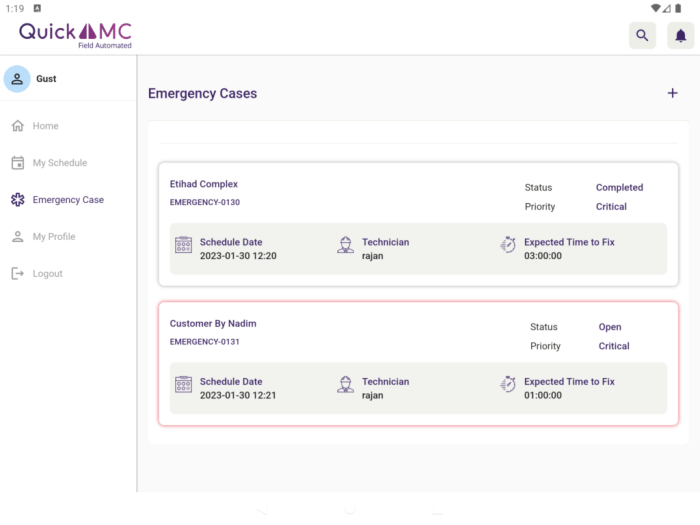Digital work order software is revolutionizing how businesses manage and execute maintenance tasks. This comprehensive guide dives deep into the benefits, features, and implementation strategies for this crucial tool in modern operations. We’ll explore how these systems can improve efficiency, reduce costs, and enhance overall productivity. From small businesses to large enterprises, understanding the potential of digital work orders is key to success in today’s dynamic environment.
Understanding the Core Functionality of Digital Work Order Systems
At its heart, digital work order software provides a centralized platform for managing all maintenance requests, from initial reporting to final completion. This includes:
- Request Submission: Users can easily submit work orders via various methods, such as mobile apps, web portals, or even through integrated systems.
- Automated Scheduling: Sophisticated systems can automatically schedule tasks based on urgency, priority, and technician availability, optimizing resource allocation.
- Assignment and Tracking: Work orders are assigned to technicians, and progress is tracked in real-time, ensuring transparency and accountability.
- Asset Management: Linking work orders to specific assets provides a comprehensive view of maintenance history, enabling proactive maintenance and reducing downtime.
- Reporting and Analytics: Generating detailed reports on maintenance costs, frequency, and trends empowers data-driven decision-making for optimized maintenance strategies.
Key Advantages of Utilizing Digital Work Order Software
The benefits of adopting digital work order software extend far beyond basic task management. Key advantages include:

Source: micromain.com
- Improved Efficiency: Streamlined workflows and automated processes reduce manual effort, freeing up personnel for more strategic tasks.
- Reduced Costs: Proactive maintenance, optimized scheduling, and accurate reporting can significantly reduce maintenance costs in the long run.
- Enhanced Communication: Real-time updates and notifications keep all stakeholders informed, fostering better communication and collaboration.
- Data-Driven Insights: Comprehensive reports provide valuable data for informed decision-making regarding maintenance strategies and resource allocation.
- Increased Safety: Improved communication and clear procedures can contribute to a safer work environment by minimizing errors and miscommunication.
Choosing the Right Digital Work Order System
Several factors should be considered when selecting a digital work order system:
- Scalability: The system should be adaptable to the growth of your business.
- Integration Capabilities: Seamless integration with existing systems like ERP or CRM is crucial.
- User-Friendliness: The software should be intuitive and easy to use for all stakeholders.
- Support and Training: Adequate support and training resources are essential for successful implementation.
- Budget Considerations: Assess the system’s cost against the potential return on investment (ROI).
Implementation Strategies for Success
Successful implementation requires a well-defined strategy:
- Thorough Needs Assessment: Identify specific needs and pain points to tailor the system to your requirements.
- Phased Rollout: Consider a phased approach to minimize disruption and maximize user adoption.
- Comprehensive Training: Equip users with the necessary skills to effectively utilize the system.
- Continuous Monitoring and Improvement: Regularly evaluate the system’s performance and identify areas for optimization.
Frequently Asked Questions (FAQ): Digital Work Order Software
- Q: How much does digital work order software cost?
- A: Pricing varies significantly based on features, functionalities, and vendor. Contact vendors for specific quotes.
- Q: Can digital work order software integrate with other systems?
- A: Yes, many systems offer robust integration capabilities with existing enterprise resource planning (ERP) and customer relationship management (CRM) systems.
- Q: What are the security considerations for a digital work order system?
- A: Data security is paramount. Choose a vendor with robust security measures and ensure compliance with relevant regulations.
- Q: How long does it take to implement a digital work order system?
- A: Implementation time depends on the complexity of the system, the size of the organization, and the level of customization.
Conclusion and Call to Action
Digital work order software offers a powerful solution for streamlining maintenance operations. By optimizing workflows, reducing costs, and enhancing communication, businesses can achieve significant improvements in efficiency and productivity. Investing in a robust digital work order system is a strategic move that can significantly impact your bottom line. Contact us today to explore how we can help you implement a tailored solution for your specific needs.
Resources:
Call to Action: Ready to transform your maintenance operations? Schedule a free consultation with our experts today to discuss your specific needs and discover how digital work order software can help your business thrive.
Frequently Asked Questions
What are the key benefits of using digital work order software?

Source: zineddinebk.com
Key benefits include improved efficiency through streamlined workflows, enhanced communication between teams, and better tracking of work order progress. This leads to reduced downtime, minimized costs, and increased profitability.
How does digital work order software integrate with other business systems?
Many digital work order software solutions integrate seamlessly with existing enterprise resource planning (ERP) systems, allowing for a holistic view of operations and improved data sharing.

Source: quickamc.com
What security measures are in place to protect sensitive data within the software?
Robust security measures, such as data encryption and access controls, are crucial for protecting sensitive information. These measures ensure compliance with industry regulations and safeguard company data.
What training is available to help users effectively utilize the software?
Comprehensive training programs are typically offered by software providers to equip users with the skills necessary to effectively utilize the software’s features and functionalities. This ensures a smooth transition and maximizes the software’s potential.